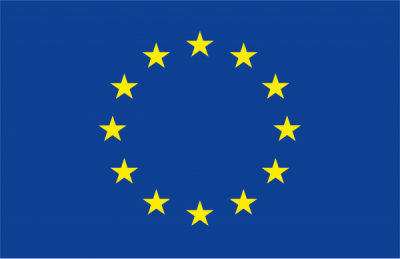
Small risk of widespread dengue fever outbreak in Cyprus
The Asian tiger mosquito is one of the most invasive species in the world. It has expanded its range continuously in Europe since it arrived in the late 1970s. The tiger mosquito is an effective vector of the dengue virus, among many others, and it has been responsible for dengue fever outbreaks in Croatia, France, Spain, and Italy since 2010[1]. Researchers of The Cyprus Institute have developed an early warning support system to predict the risk of disease due to the tiger mosquito. According to the latest assessment published on the VEClim platform, the mosquito can be active year-round in Cyprus, but the risk of local disease transmission is low during winter. Although unlikely, a potential outbreak will affect fewer than 10 people.
Researchers of the Cyprus Institute (CyI) was among the first to predict the suitability of the Cypriot climate for the arrival and establishment of tiger mosquito populations[2,3] and were also among the first to document its arrival in Limassol in 2022[4]. The arrival of the mosquito is a warning sign to monitor the potential arrival of any pathogens spread by it. The Ministry of Health has been leading an intensive vector control campaign in all affected areas in the island[5]. So far, a few sporadic cases of dengue fever have been reported due to travellers who caught the pathogen elsewhere.
The risk of an outbreak depends on a range of factors. The mosquito is climate-sensitive, meaning its abundance and activity depend heavily on weather and other environmental factors. Temperature, rainfall, and our daily activities – such as leaving cups and containers unattended and uncovered – affect the chance of the mosquito spreading an imported virus within the Cypriot population.
VEClim is an early warning decision support system supported by the Wellcome Trust, UK, and hosted by the Climate and Atmosphere Research Center (CARE-C) of the CyI. As a Digital Technology Development project in Climate-Sensitive Infectious Disease Modelling, VEClim aims to improve vector-borne disease prediction and management by employing data-driven, climate-sensitive, geographical modelling to represent vector populations and disease transmission.
VEClim has recently published a series of assessments on its web portal, https://veclim.com, analysing the potential risk and impact of a disease outbreak assuming the tiger mosquito is allowed to grow and establish a permanent population in Limassol. Based on weather forecasts by the European Centre for Medium-Range Weather Forecasts (ECMWF), the risk of an outbreak in the island is at its annual low from late November until the beginning of March. In the unlikely case of a local transmission, the expected number of infections is fewer than 10 in this period. The actual risk (and impact) is expected to be even lower because the tiger mosquito populations have not been established in the island yet.
The VEClim platform displays seasonal activity patterns and short-term forecasts of tiger mosquito abundance and activity as well as expected outbreak risk and impact throughout Europe and beyond. Planned extensions include (i) long-term future projections under climate change scenarios, (ii) region-specific assessments of proposed vector control activities and best practices, and (iii) a wider coverage of vector species. In addition to the tiger mosquito, VEClim will soon display assessments on sand flies (vectors of leishmaniasis), the yellow fever mosquito (recently arrived in the island), and the common house mosquitoes (main vectors of the West Nile virus).
We expect that the inclusion of such predictive tools in integrated vector control and early warning systems will help to design optimum management strategies with higher efficiency, lower cost, and reduced environmental side effects.
For further information please contact the PI of VEClim: Dr Kamil Erguler (k.erguler@cyi.ac.cy), Associate Research Scientist, Climate and Atmosphere Research Center (CARE-C), The Cyprus Institute. VEClim is supported by the Wellcome Trust (226065/Z/22/Z).


Assessment of outbreak risk and impact in Limassol
The following assessment for Limassol is an extract from the VEClim platform on 4 December. Since the predictions assume a naturally growing mosquito population, the actual risk is lower due to the existing vector control campaign.

Outbreak risk from September 2023 to March 2024
The figure shows the expected number of times (out of 100) an imported case results in local infections. For example, if an infectious traveller arrives in the island on 16 November 2023, VEClim predicts that the chance of having a local case is about 40% (the red line). The black line corresponds to decadal averages between 2010 and 2020. The green, orange, and red lines correspond to the predictions for 2023 and 2024. We note that, although the disease risk is low, it is higher than the decadal average, which is about 24%.

Impact of an imported case from September 2023 to March 2024
The figure shows the expected number of local infections as a result of an imported case. For example, if an infectious person arrives in the island on 16 November 2023, VEClim predicts that on average less than 4 additional people are likely to catch the infection in the following 60 days (before 15 January 2024).

References
[1] https://www.ecdc.europa.eu/en/all-topics-z/dengue/surveillance-and-disease-data/autochthonous-transmission-dengue-virus-eueea (accessed: 04/12/2023)
[2] Proestos, Yiannis, et al. “Present and future projections of habitat suitability of the Asian tiger mosquito, a vector of viral pathogens, from global climate simulation.” Philosophical Transactions of the Royal Society B: Biological Sciences 370.1665 (2015): 20130554.
[3] Erguler, Kamil, et al. “Large-scale modelling of the environmentally-driven population dynamics of temperate Aedes albopictus (Skuse).” PloS one 11.2 (2016): e0149282.
[4] Christou, M., et al. “First record of the invasive Asian tiger mosquito Aedes albopictus in Cyprus based on information collected by citizen scientists.” Journal of the European Mosquito Control Association (2023): 1-8.
[5] Vasquez, Marlen Ines, et al. “Two invasions at once: update on the introduction of the invasive species Aedes aegypti and Aedes albopictus in Cyprus–a call for action in Europe.” Parasite 30 (2023).



